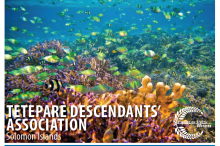/ library resources
Showing items 1 through 9 of 16.Local and indigenous communities across the world are advancing innovative sustainable development solutions that work for people and for nature. Few publications or case studies tell the full story of how such initiatives evolve, the breadth of their impacts, or how they change over time.
Local and indigenous communities across the world are advancing innovative sustainable development solutions that work for people and for nature. Few publications or case studies tell the full story of how such initiatives evolve, the breadth of their impacts, or how they change over time.
Local and indigenous communities across the world are advancing innovative sustainable development solutions that work for people and for nature. Few publications or case studies tell the full story of how such initiatives evolve, the breadth of their impacts, or how they change over time.
Local and indigenous communities across the world are advancing innovative sustainable development solutions that work for people and for nature. Few publications or case studies tell the full story of how such initiatives evolve, the breadth of their impacts, or how they change over time.
In the Solomon Islands, more than 80% of the population are rural dwellers who commonly build
livelihoods from subsistence agriculture and fisheries. Indigenous people own more than 80% of the
Mangroves are an imperilled biome whose protection and restoration through payments for ecosystem services (PES) can contribute to improved livelihoods, climate mitigation and adaptation.
Understanding the local socioeconomic context is important for the design of appropriate conservation initiatives and associated monitoring strategies, especially in areas with high degrees of inequality, to ensure conservation interventions do not inadvertently further disadvantage vulnerable pe
There is much interest in using customary marine tenure (CMT) as a basis for community-based fisheries management (CBFM) in the Pacific Island Countries (PICs). The laws of PICs lend general support to the use of CMT or tradition in fisheries management.
Pagination
Land Library Search
Through our robust search engine, you can search for any item of the over 73,000 highly curated resources in the Land Library.
If you would like to find an overview of what is possible, feel free to peruse the Search Guide.






